İsa Bey Mh. in Selçuk, İzmir, Turkey — West Asia or Southeast Europe
The Basilica of St. John
St. John was the youngest of the 12 Apostles of Jesus, often referred to as the “Evangelist” or “Beloved.” After the death of Jesus, the followers of Christ were subjected to persecution. St. John’s own brother, James, was the first martyr among the Apostles, having been “put to death with the sword” by King Herod Agrippa I about 42-44 A.D. (Acts 12:2). When Herod saw that this pleased his people, he sought to seize other Apostles. To avoid persecution, St. John left Jerusalem and came here, to Ephesus (then known as Asia Minor). It is believed that he brought the Virgin Mary (“Meryem” in the Koran), the mother of Jesus (“Isa” in the Koran) with him. Except for the time when St. John was exiled on the nearby island of Patmos, where he is believed to have written the Book of Revelation, he lived the remainder of his life in and around Ephesus. Upon his death in Ephesus, a memorial monument was erected over his grave at the foot of Ayasuluk Hill. Prior to the invasion by the Seldjuk Turks, the town of Selçuk was known as Ayasoluk, meaning “Devine Theologian” in honor of St. John.
In the Fourth Century, a great basilica was built over St. John’s tomb by the Roman Emperor Constantine. Later, in the Sixth Century, an even larger and more magnificent basilica was built over the earlier structure on orders of the Roman Emperor Justinian, who ruled from 527–565 A.D. Today, one can see the outline of both basilicas, each of which center their cruciform plan on the tomb of St. John. This Great Basilica was known as the Justinian Basilica to honor the burial place of the Apostle St. John who came to Ephesus in company with the Virgin Mary after the death of Christ. It contained six 95-foot high large cupolas that covered the main aisle. It has been determined that if fully restored it would be the seventh largest Cathedral in the world. St. John was so honored that the size of the basilica might have been larger if it were not for the limitations of the Topographical Area.
The Emperor Justinian and his wife Theodora made large financial contributions and her name was inscribed over the big capitals which crown the beautiful marble columns. An inscription was carved in the marble over his tomb which read, “This is my resting place forever, here will I dwell.” Austrian archaeologists reported that when the Tomb was opened in later centuries, it was found to contain only dust that quickly dissipated in the air. The ruins of this basilica have been thoroughly investigated by archaeologists and, commencing in 1956, have been partially restored to their original scale. This is a sacred place, and you are asked to conduct yourself with dignity here.
Inc. (Georg B. Quatman Foundation) 327 North Elizabeth Str., Lima – Ohio 45801 USA
www.societyofephesus.com
Erected by The American Society of Ephesus, Inc.
Topics. This historical marker is listed in these topic lists: Cemeteries & Burial Sites • Churches & Religion. A significant historical year for this entry is 1956.
Location. 37° 57.106′ N, 27° 22.079′ E. Marker is in Selçuk, İzmir. It is in İsa Bey Mh.. Marker can be reached from St. Jean Caddesi west of 2013 Sokak. Marker is on the pathway to the ruins of the basilica, just inside the main entrance gate of St. Jean Cd. Touch for map. Marker is in this post office area: Selçuk, İzmir 35920, Turkey. Touch for directions.
Other nearby markers. At least 8 other markers are within 3 kilometers of this marker, measured as the crow flies. St. Jean'in (Aziz Yahya) Kimliği Ve Hayatı/The Life of St. John (within shouting distance of this marker); St. Jean (Aziz Yahya) Kilisesi / The Church of St. John (about 90 meters away, measured in a direct line); Hellenistic Fountain House (approx. 2.6 kilometers away); The Great Theatre (approx. 2.6 kilometers away); Ancient Ephesos (approx. 2.6 kilometers away); Byzantine Ephesos (approx. 2.6 kilometers away); Roman Ephesos (approx. 2.6 kilometers away); The Hellenistic Ephesos (approx. 2.6 kilometers away). Touch for a list and map of all markers in Selçuk.
Regarding The Basilica of St. John. Selçuk was originally known as Ayios Theologos (Greek: Άγιος Θεολόγος), from which the Ottoman Turkish name Ayasluğ is derived.
Also see . . .
1. Basilica of St. John. Wikipedia (Submitted on June 24, 2011, by Richard E. Miller of Oxon Hill, Maryland.)
2. Sacred Destinations: Ephesus Basilica of St. John. (Submitted on June 24, 2011, by Richard E. Miller of Oxon Hill, Maryland.)
Additional keywords. St. Jean Kilisesi; Ayasuluk; Ayasoluk Hill; Temple of Artemis/Diana
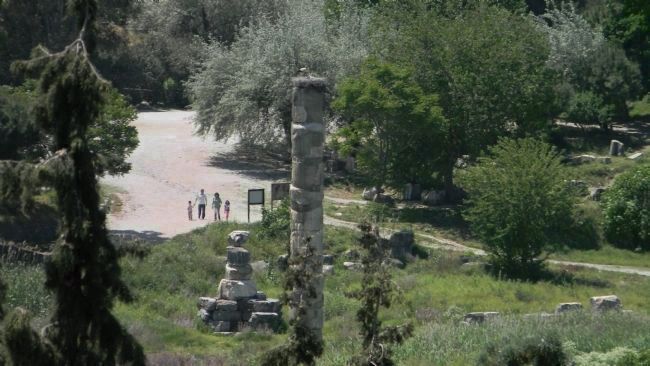
Photographed By Richard E. Miller, May 22, 2011
5. Ruins of the Temple of Artemis, one of the Seven Wonders of the Ancient World
Credits. This page was last revised on February 13, 2023. It was originally submitted on June 23, 2011, by Richard E. Miller of Oxon Hill, Maryland. This page has been viewed 1,384 times since then and 56 times this year. Photos: 1, 2. submitted on June 23, 2011, by Richard E. Miller of Oxon Hill, Maryland. 3, 4, 5, 6, 7. submitted on June 24, 2011, by Richard E. Miller of Oxon Hill, Maryland. • Bernard Fisher was the editor who published this page.
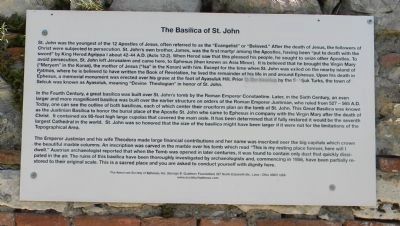
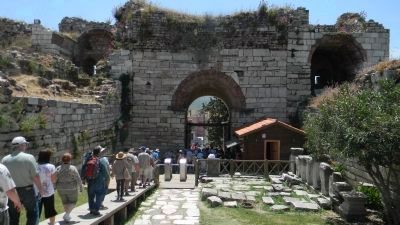
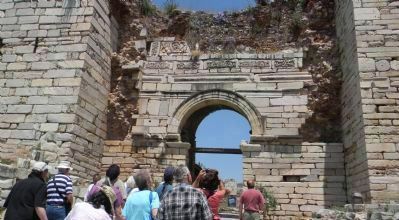
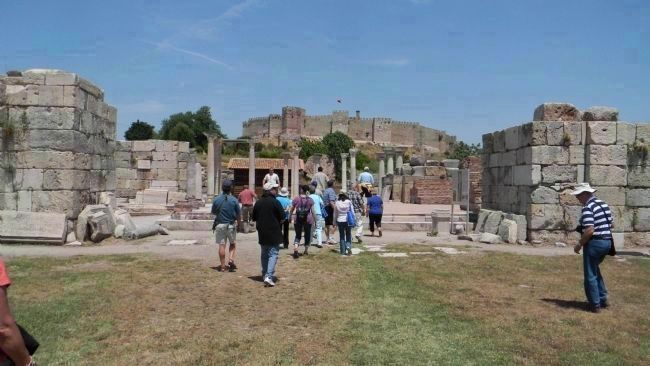
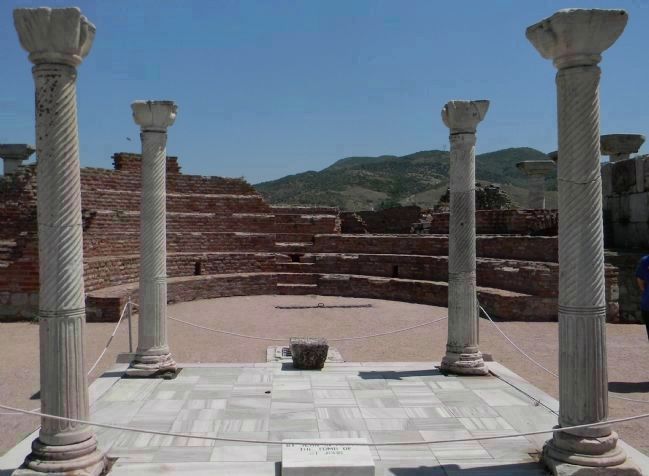
![Model showing how the "The Great" [Justinian] Basilica of St. John looked in ancient times. Click for full size. Model showing how the "The Great" [Justinian] Basilica of St. John looked in ancient times image. Click for full size.](Photos1/158/Photo158447.jpg?6242011115200PM)